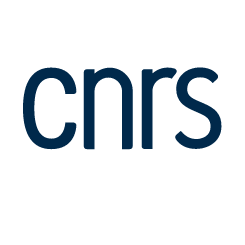Genotype-phenotype correlations in recessive titinopathies
Marco Savarese
(1)
,
Anna Vihola
(2, 3)
,
Emily C. Oates
(4)
,
Rita Barresi
(5)
,
Chiara Fiorillo
(6)
,
Giorgio Tasca
(7)
,
Manu Jokela
(8)
,
Anna Sarkozy
(9)
,
Sushan Luo
(10)
,
Jordi Diaz-Manera
(11)
,
Christoffer Ehrstedt
(12)
,
Ricardo Rojas-Garcia
(11)
,
Amets Saenz
(13)
,
Nuria Muelas
(11)
,
Fortunato Lonardo
,
Heidi Fodstad
(14)
,
Talha Qureshi
(1)
,
Mridul Johari
(2)
,
Salla Valipakka
(2)
,
Helena Luque
(2)
,
Philippe Petiot
(15)
,
Adolfo Lopez de Munain
(13)
,
Marika Pane
(7)
,
Eugenio Mercuri
(7)
,
Annalaura Torella
(16)
,
Vincenzo Nigro
(16)
,
Guja Astrea
(17)
,
Filippo Maria Santorelli
(17)
,
Claudio Bruno
(6)
,
Thierry Kuntzer
(14)
,
Isabel Illa
(11)
,
Juan J. Vilchez
(11)
,
Cedric Julien
(18)
,
Ana Ferreiro
(19)
,
Alessandro Malandrini
(20)
,
Chong-Bo Zhao
(10)
,
Olivera Casar-Borota
(21)
,
Mark Davis
(22)
,
Francesco Muntoni
(9)
,
Peter Hackman
(2)
,
Bjarne Udd
(2)
1
Helsingin yliopisto = Helsingfors universitet = University of Helsinki
2 Folkhälsan Research Center
3 Fimlab Laboratories [Tampere, Finland]
4 School of Biotechnology and Biomolecular Sciences
5 Translational and Clinical Research Institute, Newcastle University
6 IRCCS Istituto Giannina Gaslini [Genoa, Italy]
7 Fondazione Policlinico Universitario Agostino Gemelli IRCCS
8 Tampere University Hospital
9 MRC Centre for Neuromuscular Diseases
10 Huashan Hospital [Shangai]
11 CIBER de Enfermedades Raras (CIBERER)
12 Uppsala University
13 Biodonostia Health Research Institute
14 CHUV - Centre Hospitalier Universitaire Vaudois = Lausanne University Hospital [Lausanne]
15 Service d'Explorations Fonctionnelles Respiratoires, Groupement Hospitalier Nord, Hôpital de la Croix-Rousse (Hospices Civiles de Lyon), Lyon, France
16 Università degli studi della Campania "Luigi Vanvitelli" = University of the Study of Campania Luigi Vanvitelli
17 IRCCS Fondazione Stella Maris [Pisa]
18 Institut de Myologie
19 BFA (UMR_8251 / U1133) - Unité de Biologie Fonctionnelle et Adaptative
20 UNISI - Università degli Studi di Siena = University of Siena
21 Uppsala University Hospital
22 QEII Medical Centre
2 Folkhälsan Research Center
3 Fimlab Laboratories [Tampere, Finland]
4 School of Biotechnology and Biomolecular Sciences
5 Translational and Clinical Research Institute, Newcastle University
6 IRCCS Istituto Giannina Gaslini [Genoa, Italy]
7 Fondazione Policlinico Universitario Agostino Gemelli IRCCS
8 Tampere University Hospital
9 MRC Centre for Neuromuscular Diseases
10 Huashan Hospital [Shangai]
11 CIBER de Enfermedades Raras (CIBERER)
12 Uppsala University
13 Biodonostia Health Research Institute
14 CHUV - Centre Hospitalier Universitaire Vaudois = Lausanne University Hospital [Lausanne]
15 Service d'Explorations Fonctionnelles Respiratoires, Groupement Hospitalier Nord, Hôpital de la Croix-Rousse (Hospices Civiles de Lyon), Lyon, France
16 Università degli studi della Campania "Luigi Vanvitelli" = University of the Study of Campania Luigi Vanvitelli
17 IRCCS Fondazione Stella Maris [Pisa]
18 Institut de Myologie
19 BFA (UMR_8251 / U1133) - Unité de Biologie Fonctionnelle et Adaptative
20 UNISI - Università degli Studi di Siena = University of Siena
21 Uppsala University Hospital
22 QEII Medical Centre
Rita Barresi
- Fonction : Auteur
- PersonId : 765224
- ORCID : 0000-0001-7351-959X
Giorgio Tasca
- Fonction : Auteur
- PersonId : 781046
- ORCID : 0000-0003-0849-9144
Fortunato Lonardo
- Fonction : Auteur
Eugenio Mercuri
- Fonction : Auteur
- PersonId : 807832
- ORCID : 0000-0002-9851-5365
Annalaura Torella
- Fonction : Auteur
- PersonId : 781047
- ORCID : 0000-0003-2479-6018
Francesco Muntoni
- Fonction : Auteur
- PersonId : 759030
- ORCID : 0000-0002-9102-5232
- IdRef : 077207912
Résumé
Purpose High throughput sequencing analysis has facilitated the rapid analysis of the entire titin (TTN) coding sequence. This has resulted in the identification of a growing number of recessive titinopathy patients. The aim of this study was to (1) characterize the causative genetic variants and clinical features of the largest cohort of recessive titinopathy patients reported to date and (2) to evaluate genotype-phenotype correlations in this cohort. Methods We analyzed clinical and genetic data in a cohort of patients with biallelic pathogenic or likely pathogenicTTNvariants. The cohort included both previously reported cases (100 patients from 81 unrelated families) and unreported cases (23 patients from 20 unrelated families). Results Overall, 132 causative variants were identified in cohort members. More than half of the cases had hypotonia at birth or muscle weakness and a delayed motor development within the first 12 months of life (congenital myopathy) with causative variants located along the entire gene. The remaining patients had a distal or proximal phenotype and a childhood or later (noncongenital) onset. All noncongenital cases had at least one pathogenic variant in one of the final threeTTNexons (362-364). Conclusion Our findings suggest a novel association between the location of nonsense variants and the clinical severity of the disease.
